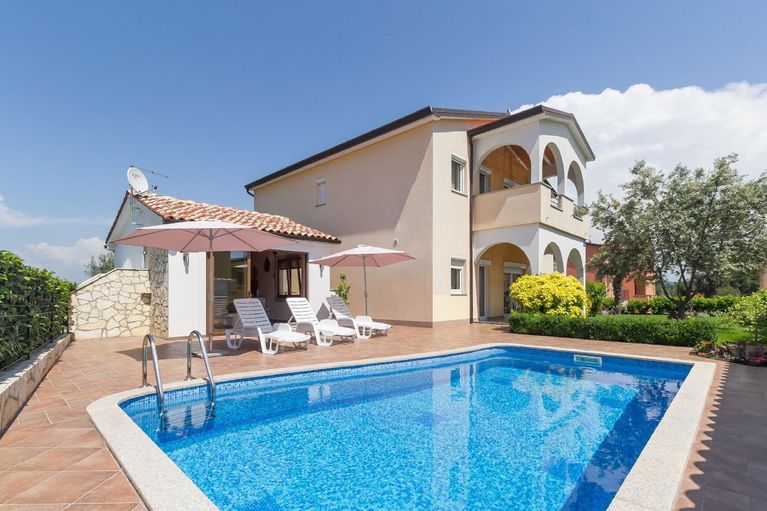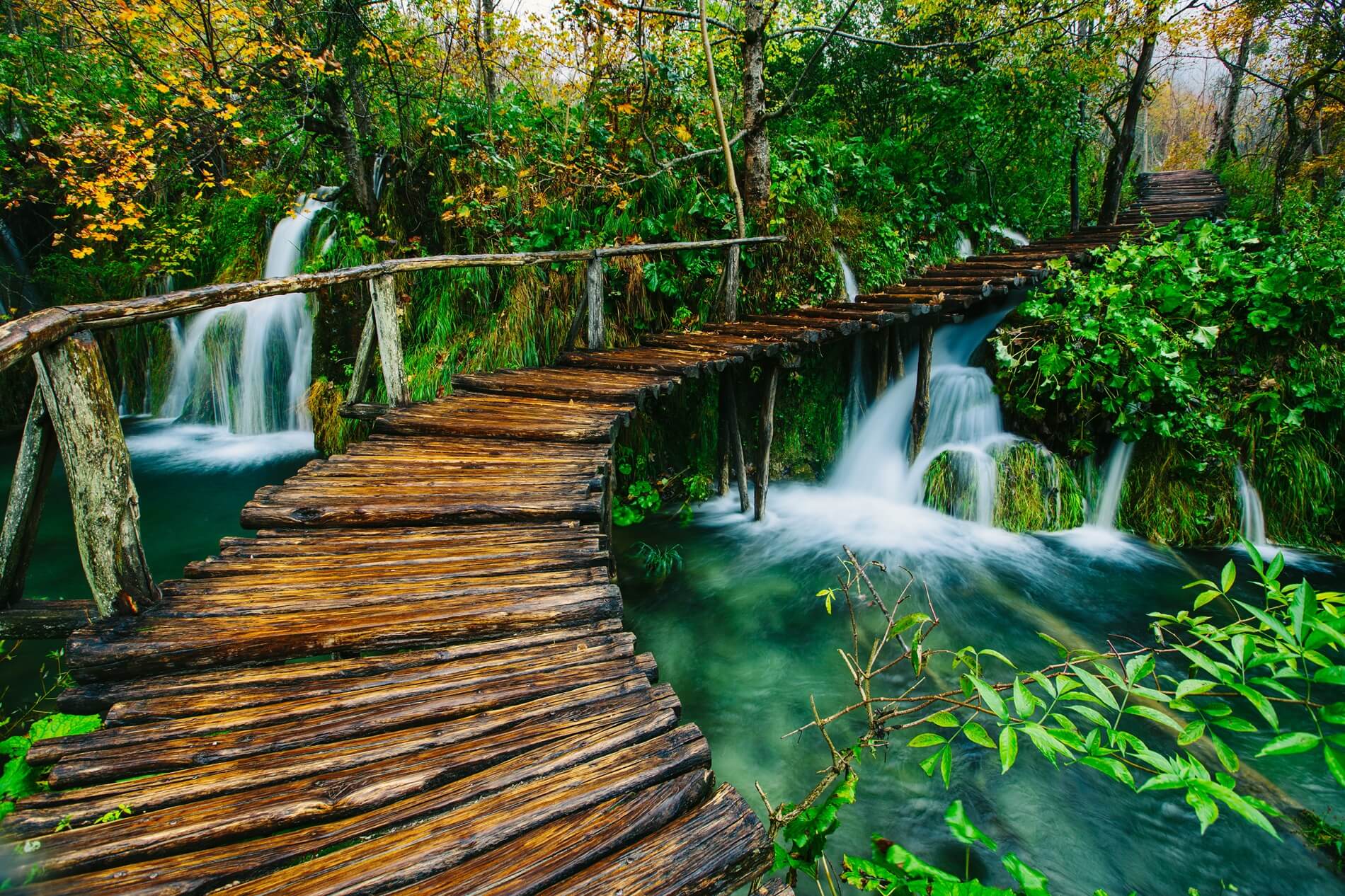
Plitvice Lakes – Have you ever dreamed of a holiday in Croatia? No? Then now is the time! Because Croatia is a diverse holiday destination that attracts numerous tourists from all over the world every year and has much more than just historic cities and beautiful beaches.
There is a natural gem that is often overlooked but definitely worth a visit – Plitvice Lakes National Park. But why should you plan a day trip to Plitvice Lakes? The answer lies not only in the impressive nature, but also in the unforgettable experiences that await you. From hiking along the scenic trails to boat tours on the clear lakes, Plitvice Lakes National Park offers countless opportunities to experience the beauty of Croatia in its purest form.
But that’s not all. To maximize your stay in this magical environment, we present you great holiday accommodations that you can book with Holiday-Sun. Whether cozy holiday homes or comfortable apartments, these accommodations not only offer relaxation after a day of exploring, but also an ideal base for your adventures in the national park.
The history of tourism around Plitvice Lakes dates back to 1861, when officers from the military front built the first tourist house with just three rooms. These humble beginnings laid the foundation for the development of Plitvice Lakes into a sought-after tourist attraction. By 1894, the stunning natural landscapes were attracting thousands of travelers. Finally, in April 1949, the lakes were granted the status of the first and oldest national park in Croatia, with extensive conservation measures being put in place.
The 1960s brought a modern road connection to Plitvice Lakes and marked a significant increase in visitor numbers. Finally, UNESCO crowned Plitvice Lakes with its inclusion on its World Heritage List in 1979. This prestigious award was given to the region for its “outstanding natural beauty and pristine production of tuff.”
Turquoise waters sparkling in the sunlight, roaring rapids, spectacular waterfalls and an endless variety of plants and animals – these are just some of the fascinating features of the Plitvice Lakes. The 16 large and small lakes, strung like pearls on a string, form a unique natural landscape that is not only the largest, but also the oldest and most famous national park in Croatia.
The Plitvice Lakes stretch through a unique climate influenced by the Adriatic Sea and mountain air. Protected by proud chains of peaks and by the rare phenomenon of travertine barriers formed over thousands of years by limestone deposits, a paradise of incomparable beauty has been created here. The region continues to be home to all the animal species that existed around the lakes before human influence. Many of the plants and animals found here are unique and can only be found in the nature park.
The national park attracts around 900,000 visitors every year, partly due to the fact that in the 1960s the lake and waterfall scenes from Winnetou I and large parts of Winnetou II and III were filmed against this unique natural backdrop. In fact, the “Treasure of Silver Lake” sank in front of the Plitvice Lakes, and the breathtaking natural backdrop makes the national park an unforgettable setting for many visitors.
The 16 Plitvice Lakes meander from south to north through the forested and mountainous landscape over a distance of 9 kilometers, overcoming a difference in altitude of over 130 meters between the upper and lower lakes. The characteristics of the lakes vary according to their location, with the twelve larger upper lakes characterized by a gently rolling landscape, while the four lower lakes are lined with rugged, wildly contoured white limestone cliffs.
The total area of the lakes is 2 square kilometers, with almost 80% being the two largest and deepest lakes. The uppermost lake, “Proscansko jezero”, stretches for more than 2100 m and reaches a depth of up to 37 m. The largest of all Plitvice Lakes, the “Kozjak”, stretches for more than 2300 m and reaches a depth of up to 47 m.
Veliki Slap, also known as the Great Waterfall, rises majestically from the lower lakes and is undoubtedly a highlight of any hike through the national park.
Here the Plitvice stream plunges over impressive 78-metre-high cliffs, and the Veliki Slap is proud to be the largest waterfall in Croatia.
At the Galovac waterfall, the water pours impressively to a depth of about 25 meters, creating a picturesque view into the lake of the same name.
This waterfall, part of the upper lakes, towers above Lake Kozjak and blends harmoniously into the impressive landscape.
Since Plitvice Lakes is one of Croatia’s top attractions, it can get a bit crowded at certain times of the year. The months of July and August are particularly busy. To avoid crowds, it’s best to visit from June to September. During peak season, it’s advisable to book day tickets in advance and arrive at the national park early in the morning.
In spring and summer, the park is lush and full of life, perfect for long hikes and explorations along the freshwater landscapes. In autumn, the park turns into a sea of red, yellow and orange leaves, a unique atmosphere for a whole day in nature.
Winter brings a magical silence to the park, especially if you have the chance to see it with a blanket of snow. The snowy landscape gives the park a fairytale atmosphere, however, some hiking trails may be closed due to uncertain weather conditions.
The unique climate of the Plitvice Lakes is largely determined by their proximity to the coast – only about 50 km as the crow flies – and the impressive altitude between 370 and almost 1300 meters. These special geographical features create an exceptional climate, influenced by the mild Adriatic coastal climate and bordered by the imposing “Velebit” mountain range. The result is a pleasantly temperate mountain climate.
Summers in the national park are sunny but not overly hot, making them ideal for guests who do not tolerate high temperatures well. Spring and autumn are short and tend to rain, but offer optimal conditions for relaxed hikes and sporting activities. The nature in the park is particularly attractive at this time.
Winter begins in November and lasts until March, often with cold weather and plenty of snow. In December and January, the lakes are usually covered in ice, creating a fascinating winter backdrop.

The remarkable location of Plitvice Lakes makes the national park easily accessible from any region, turning it into an unforgettable destination. Whether you are staying in our Istria holiday home, a Dalmatian holiday home or a Kvarner Bay holiday home, the national park is easily accessible by rental car from any of our holiday homes and should definitely be on your Croatia bucket list.
Plitvice Lakes not only reveal their natural beauty but also captivating legends that will make your visit an even more exciting experience.
Prošćansko Lake is connected with the “Legend of the Black Queen”. The “Prošnja” legend tells the story of a period of drought in the region. The residents asked the magical queen for help, and she responded by creating the Plitvice Lakes. Prošćansko Lake was the first lake she created. The lakes are each separated by travertine barriers, which were formed by the deposition of limestone in the water. The continuous flow of water from the lakes over the obstacles into the next lake also creates a chain of waterfalls.
The lower lakes are located in a permeable limestone gorge. A walkable promenade connects the Gavanovac and Kaluđerovac lakes. Gavanovac Lake is named after the Treasure of Gavanovo, which is said to still be hidden somewhere in the lake.
The legend of the wise monk says that the monk lived either in the Šupljara or Golubnjača cave. According to historical accounts, people used to come to Plitvice Lakes to visit the monk and ask him for advice.